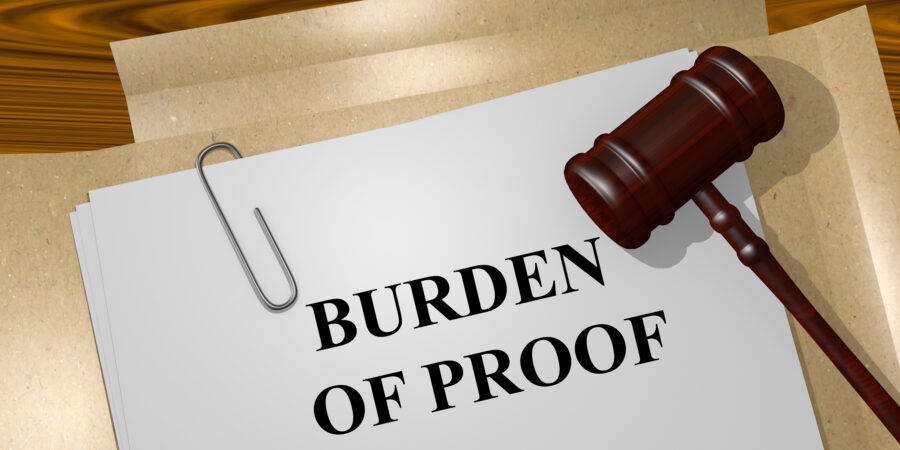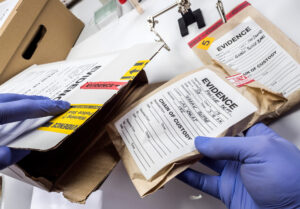The Burden of Proof Explained
Whether you have been injured in a car accident, by medical malpractice or by any number of other damaging events, you may be reeling from a variety of effects. Injuries are often followed by large medical bills for emergency medical care, hospitalizations, surgeries, medications and more. Financial impacts from a personal injury may include lost wages if you had to take time off of work, property or vehicle damages and other accident-specific costs.
Through a lawsuit, you could recoup funds for all costs related to the event. However, in order to win your lawsuit, you have the burden of proving your case in court. This burden falls on the plaintiff in a civil case, but what does this mean? A closer look will reveal what you need to know about this important element of a civil lawsuit before you file your case and appear in court.
Understanding Burden of Proof in a Civil Case
At its most basic level, this terminology means that the plaintiff must prove the statements and claims that he or she is making to the court. Many people are familiar with this requirement for criminal cases, which is that the claim must be proven beyond a reasonable doubt. With personal injury cases, however, a different standard for proof applies.
There are four primary components in a civil lawsuit. First, the defendant had to have some established duty in relation to the plaintiff. In the case of a car accident, this duty may have been to obey the rules of the road. In a premises liability case, this duty may have been to remove hazardous obstacles that pose a tripping hazard from the front walkway. The duty is defined as something that a reasonable person would or would not have done in a similar situation.
The next component in this type of lawsuit is a breach of that duty. Either the defendant acted in such a way or failed to act in such a way that contributed to the personal injury incident in question. The third component is the cause of the personal injury. The defendant’s actions or inactions led to the plaintiff’s injuries. Finally, the plaintiff endured named damages because of those actions or inactions.
Generally, it is the plaintiff’s responsibility in a civil case to prove each of these components. Rather than proving them beyond a reasonable doubt, however, a civil lawsuit plaintiff only needs to prove that they are more likely true or untrue. Because of this, it is much easier to meet the burden of proof in a civil case than in a criminal case.
The Elements of Proof
When you look more closely at the burden of proof, you will see that it is broken down into two parts. These are the burden of production and the burden of persuasion. The burden of production describes the plaintiff’s duty to present his or her evidence to the court. This includes evidence documenting all four components of a civil case described previously. For example, to prove that the plaintiff suffered damages from a motorcycle accident, the plaintiff’s attorney may present copies of medical bills and records to the court.
The burden of persuasion describes the duty of the plaintiff to show that his or her proposition is true. A lawsuit typically proposes that the defendant’s actions or inactions ultimately led to the plaintiff’s damages. Through a preponderance of evidence that supports all of the components in a civil lawsuit, this duty is met.
A Preponderance of Evidence
In most, but not all, civil cases, the plaintiff makes his or her case by showing a preponderance of evidence. Remember that a criminal lawsuit requires the prosecutor to prove his or her case beyond the shadow of a doubt. This means that the jury must be 100-percent certain of guilt before the accused can be found guilty. The preponderance of evidence threshold in a civil case essentially means that the plaintiff must prove that his or her case is more likely true than not true. This lowers the threshold to 51-percent certainty.
Consider, for an example, a property liability case where a visitor to a property tripped over an obstacle on the front sidewalk. The plaintiff in the case, who is the visitor to the property, must show that defendant did not take reasonable steps to create a safe environment. More than that, the plaintiff must show that the defendant was likely responsible for placing the obstacle in the way and that the specific obstacle likely led to the injuries and damages. The defense’s goal in a civil case is to cast enough doubt in the jury’s minds that the preponderance of evidence threshold is not met.
Clear and Convincing Evidence
In some personal injury lawsuit cases in California, the plaintiff must prove his or her case further with clear and convincing evidence. Clear and convincing evidence requires more factual evidence than what is required to meet the preponderance of evidence threshold, but the standard is not as high as what may be required to prove a criminal case beyond a reasonable doubt. Specifically, clear and convincing evidence must show that there is a high probability of the matter in question.
Notably, plaintiffs in California who seek punitive damages in a civil lawsuit must provide clear and convincing evidence that the defendant acted maliciously, fraudulently or oppressively.
Shifting the Burden Requirement
It is important to note that the proof burden does not always remain with the plaintiff. As part of the defendant’s efforts to build a strong defense against the accusations, he or she may use an affirmative defense. This is when the defense makes an assertion of facts in support of the defendant’s claims. These facts were not introduced to the court by the plaintiff, and it is not the plaintiff’s duty to prove those facts. Because of this, the burden of proof may shift to the defendant if an affirmative defense is introduced. In some cases, the proof requirement could shift between the plaintiff and the defendant several times before a ruling can be delivered. Keep in mind that the defendant’s proof requirement is usually below that of a reasonable doubt.
Exploring the Strength of Your Case
The compensation that you may receive by winning your personal injury lawsuit can be substantial. In fact, it could help you to afford the medical attention that you need, to cover your bills while you recover from your injuries and to address other financial challenges caused by the incident. However, many injured parties want to know how strong their case is before they pursue the matter through the court system. This boils down to the plaintiff’s ability to meet the burden of proof. How do you know when you can prove your case to be more likely true than not true or if you can meet the requirement for clear and convincing evidence? In many cases, plaintiffs must prove multiple aspects of their claim in order to win their case, and each aspect may require its own supporting evidence.
Each personal injury lawsuit is unique, so it is important to consult with an experienced California attorney as a first step. Through a consultation, your attorney can gather the facts about your case and discuss different types of evidence that may be required to win your case. In some cases, the attorney must conduct legal research to determine the types of evidence that have been successfully used in other similar cases in the past.
Request a Consultation Today
Are you wondering how strong your personal injury case is? Our legal team at JT Legal Group offers free consultations to all new clients. Our lawyers want to help you maximize the compensation available to you through a personal injury lawsuit. Our legal expertise spans across many types of personal injury cases, including pedestrian accidents, motorcycle accidents, premises liability, car accidents and more. To discuss your case with a California attorney, contact JT Legal Group today.



